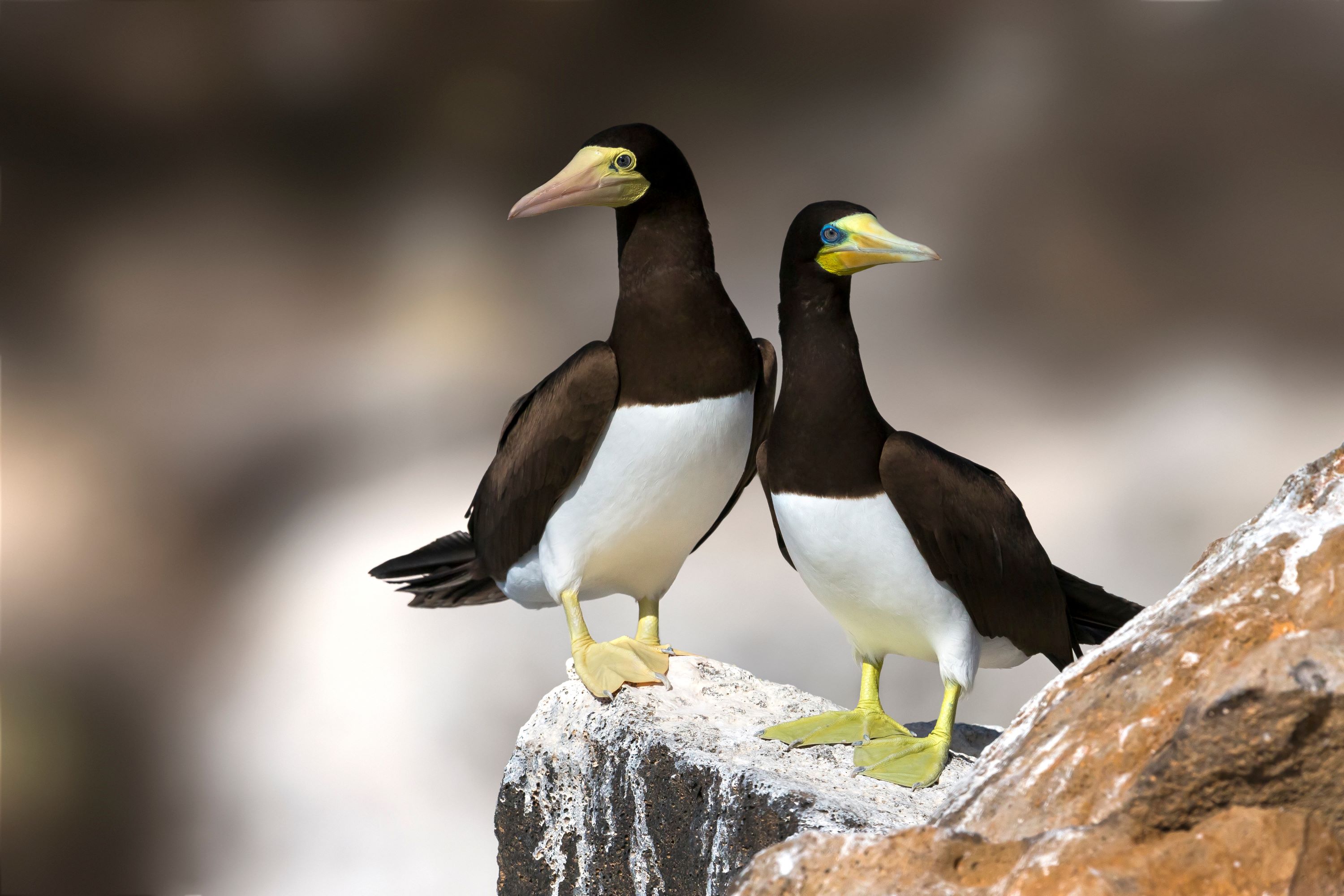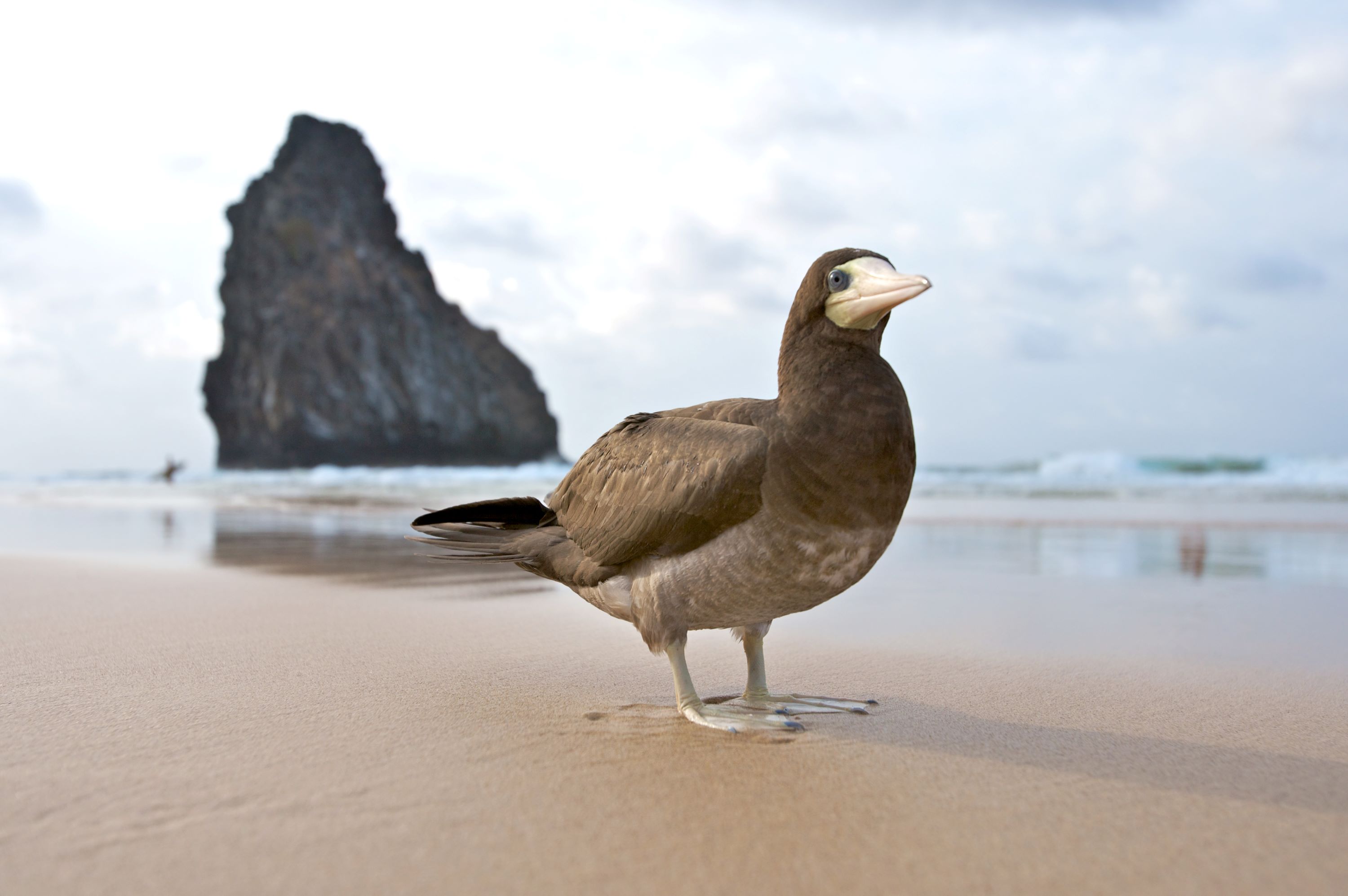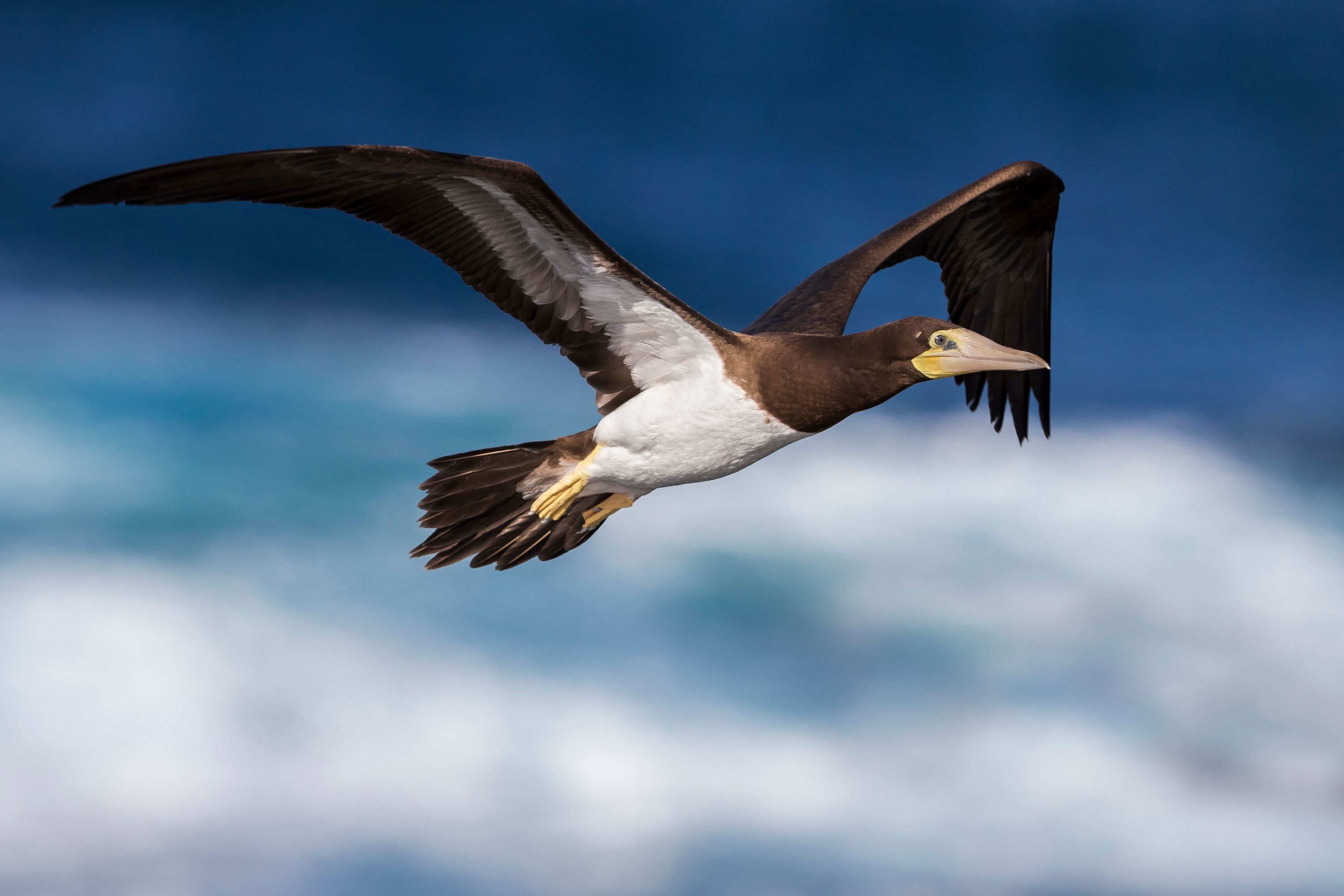
The Brown Booby: Delving into the World of Sula leucogaster
Introduction to the Brown Booby
The Brown Booby, scientifically referred to as Sula leucogaster, is a large seabird known for its distinctive appearance and remarkable diving abilities. This species, a member of the Sulidae family, is commonly found in tropical and subtropical oceans around the world. The Brown Booby's unique behavior and breeding practices make it a fascinating subject for ornithological study and a captivating sight for birdwatchers.
Physical Characteristics
Adult Brown Boobies are impressive birds, averaging about 70-80 cm in length with a wingspan ranging from 1.3 to 1.5 meters. They have a robust body with a long, pointed bill and distinctive coloration: dark brown or black plumage covering most of their body, with a contrasting white underbelly. The birds have pale yellow eyes and their bare facial skin can vary in color from yellow to green. Their feet are large and webbed, aiding in their powerful swimming ability.
Habitat and Distribution
Brown Boobies are pelagic birds, spending much of their life at sea. They are found in the tropical waters of the Atlantic, Pacific, and Indian Oceans, typically nesting and roosting on islands, cliffs, and cays. These birds prefer locations that are isolated from mainland predators and human disturbances.

Diet and Feeding Habits
Their diet primarily consists of small fish and squid, which they hunt using a spectacular plunge-diving technique. Brown Boobies can dive from heights of up to 20 meters, striking the water at high speeds to capture their prey. They are also known to follow fishing boats to feed on bycatch and can occasionally be seen hunting in groups.
Breeding and Reproductive Behavior
The Brown Booby breeds in colonies on islands and coastal regions. Their breeding season varies depending on their geographical location but is generally linked to the abundance of food. Courtship involves elaborate displays of sky-pointing, bill-fencing, and mutual preening, where males show off their flying skills to attract a mate.
Nesting and Incubation
Nesting sites are typically located on the ground or in low shrubs. The female lays one to two eggs, which are incubated by both parents for about 42-46 days. Unlike many other seabird species, Brown Boobies do not construct elaborate nests; instead, they lay their eggs on bare surfaces or in simple scrapes in the ground.

Chick Rearing and Fledging
After hatching, the chicks are fed by both parents through regurgitation. The parental care is intensive during the early stages of the chick's life. Fledging occurs at around 3-4 months, after which the juveniles become independent and leave the nest to fend for themselves.
Behavior and Social Structure
Brown Boobies are social birds, often seen roosting and nesting in large groups. They have a complex social structure within their colonies, with established hierarchies and territories. These birds are also known for their agility in the air, capable of swift maneuvers and gliding for long distances over the ocean.
Conservation Status
Currently, the Brown Booby is not listed as an endangered species; however, they face threats from habitat destruction, human disturbance, and pollution. Efforts to protect their breeding grounds and marine habitats are crucial for the conservation of this species.
Conclusion: The Intriguing Life of the Brown Booby
In conclusion, the Brown Booby (Sula leucogaster) is an extraordinary seabird with unique ecological and behavioral traits. While they are not found in regions like Utah, their presence in tropical and subtropical waters around the globe highlights the diversity and complexity of marine ecosystems. Understanding and appreciating the life of the Brown Booby underscores the importance of ocean conservation and the protection of marine biodiversity.